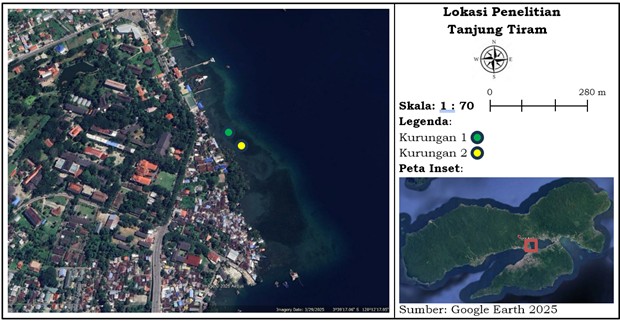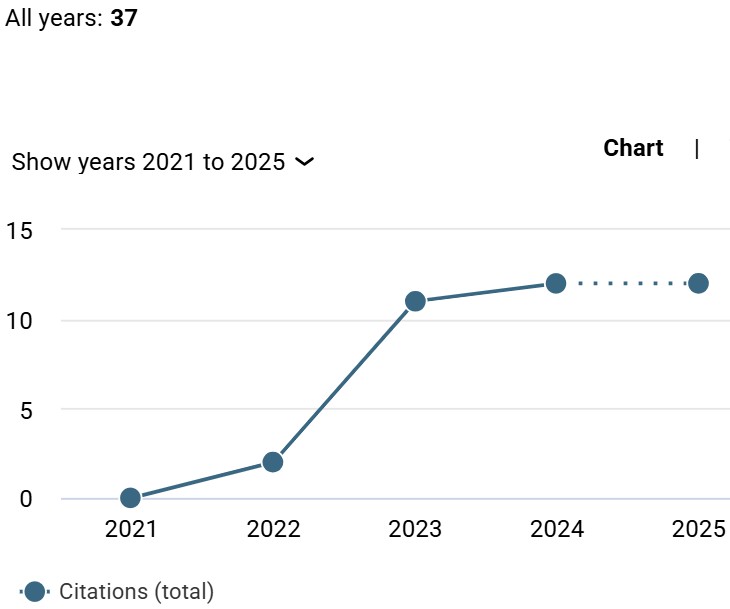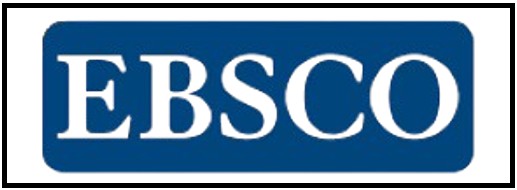Litter Production of Enhalus acoroides and Thalassia hemprichii in the seagrass ecosystem of Tanjung Tiram, Inner Ambon Bay
Abstract
Seagrasses are important primary producers that support marine life. The litter, or fallen leaves, of seagrasses plays a vital role as a source of nutrients in coastal ecosystems. One of the seagrass ecosystems found in Inner Ambon Bay is located in Tanjung Tiram. Studies on litter production have been extensively conducted in mangrove ecosystems; however, in the Maluku region, only one such study has been reported, and no research on seagrass litter production has yet been documented. Litter production serves as an important indicator for assessing coastal ecosystem functioning and blue carbon stocks. Therefore, this study aimed to analyze the litter production of two seagrass species, Enhalus acoroides and Thalassia hemprichii, in the Tanjung Tiram waters of Inner Ambon Bay. The research was conducted from July to August 2025 in the Tanjung Tiram seagrass ecosystem, Ambon City. Litter production was measured using the cage method, constructed from a 3 mm mesh nylon net with dimensions of 0.5 × 0.5 m. Prior to cage installation, the substrate was cleared of existing litter material and benthic organisms, and seagrass density was subsequently estimated. The study period lasted for 3 × 24 hours, with floating and sunken litter collected every 24 hours. The collected litter was oven-dried and weighed to determine dry biomass. Results showed that both E. acoroides and T. hemprichii produced higher amounts of sunken litter (0.0082 g dry weight/shoot/day and 0.0063 g dry weight/shoot/day, respectively) compared to floating litter (0.0062 g dry weight/shoot/day and 0.0028 g dry weight/shoot/day, respectively). The total litter production of E. acoroides (0.0144 g dry weight/shoot/day) was higher than that of T. hemprichii (0.0091 g dry weight/shoot/day).
References
Dewi, C. S., Yona, D., & Iranawati, F. (2020). Analisis Kesehatan Ekosistem Lamun Di Pantai Menjangan, Buleleng, Bali. Prosiding Seminar Nasional Perikanan dan Kelautan, 8(1), 36–40.
Gacia, E., Duarte, C. M., Marbà, N., Terrados, J., Kennedy, H., Fortes, M. D., & Tri, N. H. (2003). Sediment deposition and production in SE-Asia seagrass meadows. Estuarine, Coastal and Shelf Science, 56(5-6), 909–919. https://doi.org/10.1016/S0272-7714(02)00286-X
Hartati, R., Zainuri, M., Ambariyanto, A., Trianto, A., & Mahendrajaya, R. T. (2018, March). Similarity microalgal epiphyte composition on seagrass of Enhalus acoroides and Thalasia hemprichii from different waters. IOP Conf. Ser.: Earth Environ. Sci, 139, The 2nd International Symposium on Marine and Fisheries Research 24–25 July 2017, Yogyakarta, Indonesia, 139 012011). https://doi.org/10.1088/1755-1315/139/1/012011
Hyndes, G. A., Berdan, E. L., Duarte, C., Dugan, J. E., Emery, K. A., Hambäck, P. A., Henderson, C. J., Hubbard, D. M., Lastra, M., Mateo, M. A., Olds, A., & Schlacher, T. A. (2022). The role of inputs of marine wrack and carrion in sandy-beach ecosystems: A global review. Biological Reviews, 97(6), 2127–2161. https://doi.org/10.1111/brv.12886
Kajela, A., & Mvungi, E. (2018). Seasonal variation and nutrient levels influence phenolic contents in seagrass Thalassia hemprichii along Dar es Salaam coast. Tanzania Journal of Science, 44(3), 61–71.
Krisye, K. (2012). Analisis Produksi Serasah dan Laju Dekomposisi Berbagai Jenis Lamun di Perairan Pulau Barrang Lompo [Undergraduate thesis, Universitas Hasanuddin]. Repository Universitas Hasanuddin.
Krisye, K., Rahman, R., Fendjalang, S. N., & Sirajuddin, N. T. (2023a). Jenis dan Tutupan Lamun di Perairan Pulau Maginti, Kabupaten Muna Barat, Sulawesi Tenggara. Grouper, 14(1), 24–28. https://doi.org/10.30736/grouper.v14i1.149
Krisye, K., Fendjalang, S. N., & Rahman, R. (2023b). Concentration and CO2 Emissions in Seagrass Ecosystem Inner Ambon Bay. Agrikan Jurnal Agribisnis Perikanan, 16(2), 57–62. https://doi.org/10.52046/agrikan.v16i2.1725
Litaay, C. (2014). Distributionand diversity of macro algae communities in the Ambon Bay. Jurnal Ilmu dan Teknologi Kelautan Tropis, 6(1), 131–142. https://doi.org/10.29244/jitkt.v6i1.8636
Nojima, S. (1996). The rate and fate of production of seagrass debris in cages over a Syringodium isoetifolium (Aschers.) Dandy Meadow, in Fiji. Seagrass Biology, 149–154.
Oldham, C., McMahon, K., Brown, E., Bosserelle, C., & Lavery, P. (2014). A preliminary exploration of the physical properties of seagrass wrack that affect its offshore transport, deposition, and retention on a beach. Limnology and Oceanography: Fluids and Environments, 4(1), 120–135. https://doi.org/10.1215/21573689-2844703
Pasanea, K., Lokollo, F. F., Rahman, R., Supusepa, J., Kalay, D. E., & Hulopi, M. (2024). Asosisasi Inter-Spesies Lamun di Perairan Pulau Maginti Sulawesi Tenggara. Journal of Coastal and Deep Sea, 2(1), 37–43. https://doi.org/10.30598/jcds.v2i1.13562
Rahmawati, S., Irawan, A., Supriyadi, I. H., & Azkab, M. H. (2017). Panduan Pemantauan Padang Lamun. Pusat Penelitian Oseanografi-LIPI.
Rugebregt, M. J., Matuanakotta, C., & Syafrizal, M. (2020). Keanekaragaman Jenis, Tutupan Lamun, dan Kualitas Air di Perairan Teluk Ambon. Jurnal Ilmu Lingkungan, 18(3), 589–594. https://doi.org/10.14710/jil.18.3.589-594
Sullivan, G. M., & Feinn, R. (2012). Using effect size—or why the P value is not enough. Journal of graduate medical education, 4(3), 279–282. https://doi.org/10.4300/JGME-D-12-00156.1
Sugiyono. (2017). Metode Penelitian Kuantitatif, Kualitatif, dan R&D. CV Alfabeta; Bandung.
Suyadi, S. (2012). Satu dekade kondisi hutan mangrove di Teluk Ambon, maluku (A decade of mangrove forest condition in Ambon Bay, Maluku). Jurnal Biologi Indonesia, 8(1), 197–203.

Copyright (c) 2025 Krisye Pasanea, Junita Supusepa, Amelia Putri

This work is licensed under a Creative Commons Attribution-ShareAlike 4.0 International License.
Copyright on articles was retained by the respective author(s) without restrictions. The author grants the journal its first publication rights with the work simultaneously licensed under the Creative Commons Attribution-ShareAlike 4.0 International (CC BY-SA) license. This means anyone is free to copy, transform, or redistribute articles for any lawful purpose in any medium, provided they give appropriate attribution to the original author(s).














